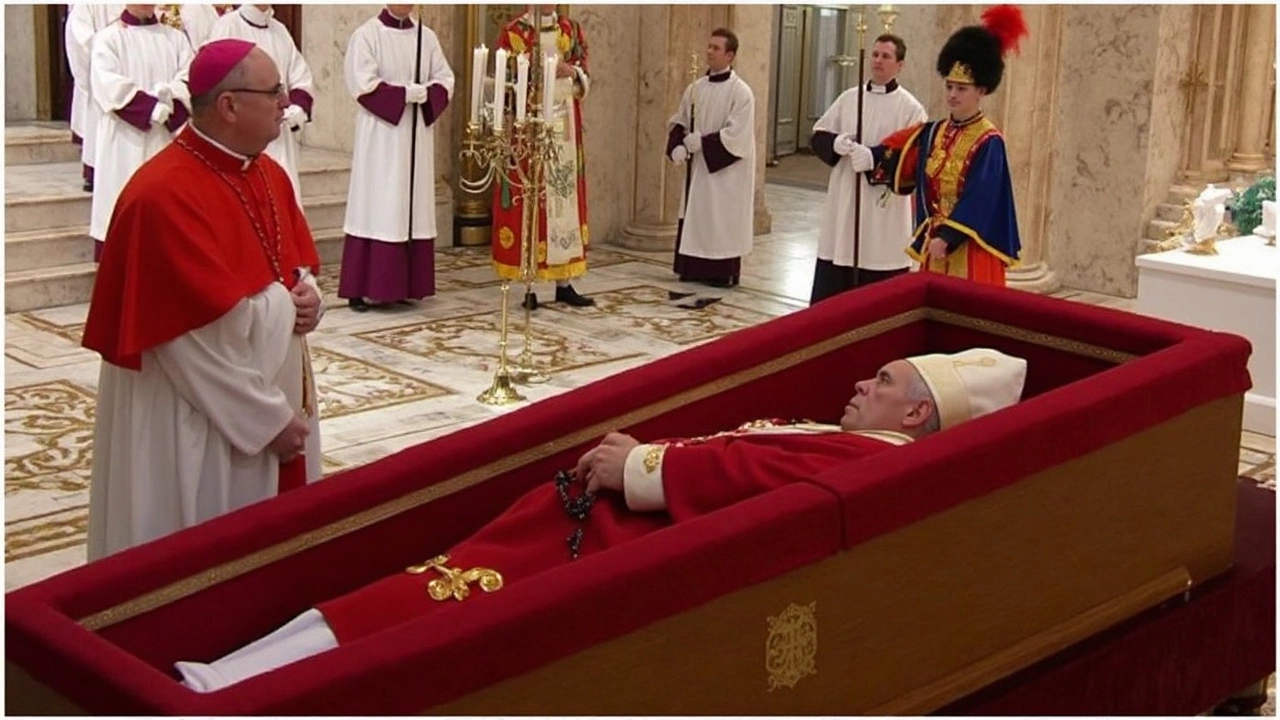Pope Francis’ Final Journey: Simplicity in the Spotlight
When was the last time you saw centuries-old rituals take an unexpected turn? That’s exactly what happened at Pope Francis’ funeral, which not only drew global attention for its scale but also for breaking with long-standing Vatican traditions. His funeral wasn’t just another elaborate papal farewell – it was a pointed statement about humility, service, and the sort of legacy he wanted to leave behind.
Preparations for the funeral kicked off with a three-step ceremony that stood out for its stripped-back approach. Picture the late pope lying in a plain wooden coffin, dressed in a simple white cassock and red vestments, on display in St. Peter’s Basilica for three days. This was no ordinary viewing: most popes before Francis were locked away under layers of cypress, lead, and elm coffins, out of sight. Francis turned that tradition upside down by choosing a single, unadorned coffin—every detail echoing his preference for a less-is-more approach to life and death. Even the process of declaring his passing was moved to a chapel rather than a grand public hall, another nod to privacy and modesty.
The public responded in kind. You didn’t have to look far to see the impact: the streets of Rome thundered with the footsteps of 200,000 pilgrims and Romans, all hoping for one last glimpse or a chance to pay quiet respects. As the simple motorcade passed, applause broke out across the crowds—not for grandeur or spectacle, but a shared respect for a pope famous for his focus on the poor and forgotten.

World Leaders Pay Tribute Amidst Unprecedented Funeral Rites
At the official ceremony on April 26, the gravity of the moment was underscored not by excess, but by who showed up. Representatives from 160 nations sat side by side with European royal families, 220 cardinals, 750 bishops, and more than 4,000 priests. The sheer variety of people—from heads of state to humble Franciscan friars—spoke volumes about the global affection and respect Francis had earned throughout his papacy. It wasn’t just Catholics who lined up along the streets; people from all faith backgrounds and walks of life came because he was seen as everyone’s pope, especially to those on society’s margins.
After the Requiem Mass in St. Peter’s Square, another break from tradition followed as the pope’s coffin traveled to the Basilica of St. Mary Major. He was laid to rest near the Salus Populi Romani icon—a decision pulled straight from his final wishes and consistent with his long-standing devotion to this sacred image. The updated rites, personally approved by Francis, allowed for an open casket and pushed aside much of the centuries-old formality, instead putting humility, faith, and the hope of resurrection front and center. Each step along the way showed how Francis, even in death, refused to let the trappings of power overshadow his commitment to the simple, often-overlooked core of the Christian message.
